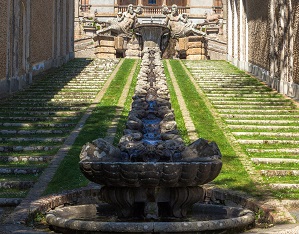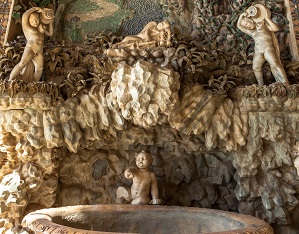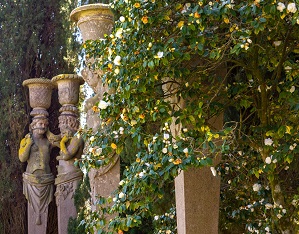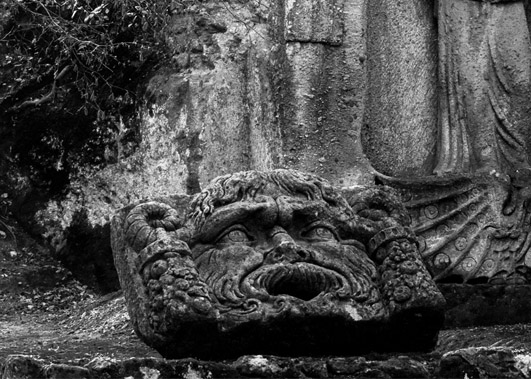The solid pentagonal structure of this castle-palazzo dominates the village, standing as a visible symbol of the power of the Farnese family over the region. Once inside, splendid frescoed rooms lead to an enchanted garden culminating in the “Palazzina del Piacere” where, in the intimacy reserved for the guests, power leaves space to pleasure.
Cardinal Alessandro Farnese, grandson of Pope Paul III and himself aspiring to become Pope, around the mid-16th century entrusted family architect Jacopo Barozzi da Vignola with the restoration of a pentagonal fortress designed by Antonio da Sangallo: the solid structures of the fortress were converted into the villa’s airy architecture, with its arches, staircases, and terraces built on the bastions. Through the lavish rooms frescoed with episodes celebrating the family history and across the bridges over the moat, we reach two secret quadrangular gardens, closed in by walls and arranged in a fan-like position, connected to the summer and winter apartments. The gardens were divided into sections bordered by evergreens and featured flowers, fruit trees, and were adorned with splendid decors: the Grotta dei Satiri, the Fontana di Venere and the Fontana del Pastore can still be visited. Going up towards the hill, after walking along the path lined with rows of European silver firs, we meet the monumental “catena d’acqua” sculpted cascade water feature, beyond which there is the more intimate “Giardino superiore” originally intended for outdoor dining. Around 1585 the architect Giacomo del Duca built the “Palazzina del Piacere” and a few decades later, where the garden meets the wood, Girolamo Rainaldi added the “Giardino dei fiori” and a scenographic architectural backdrop with water nymphs and unicorns.






